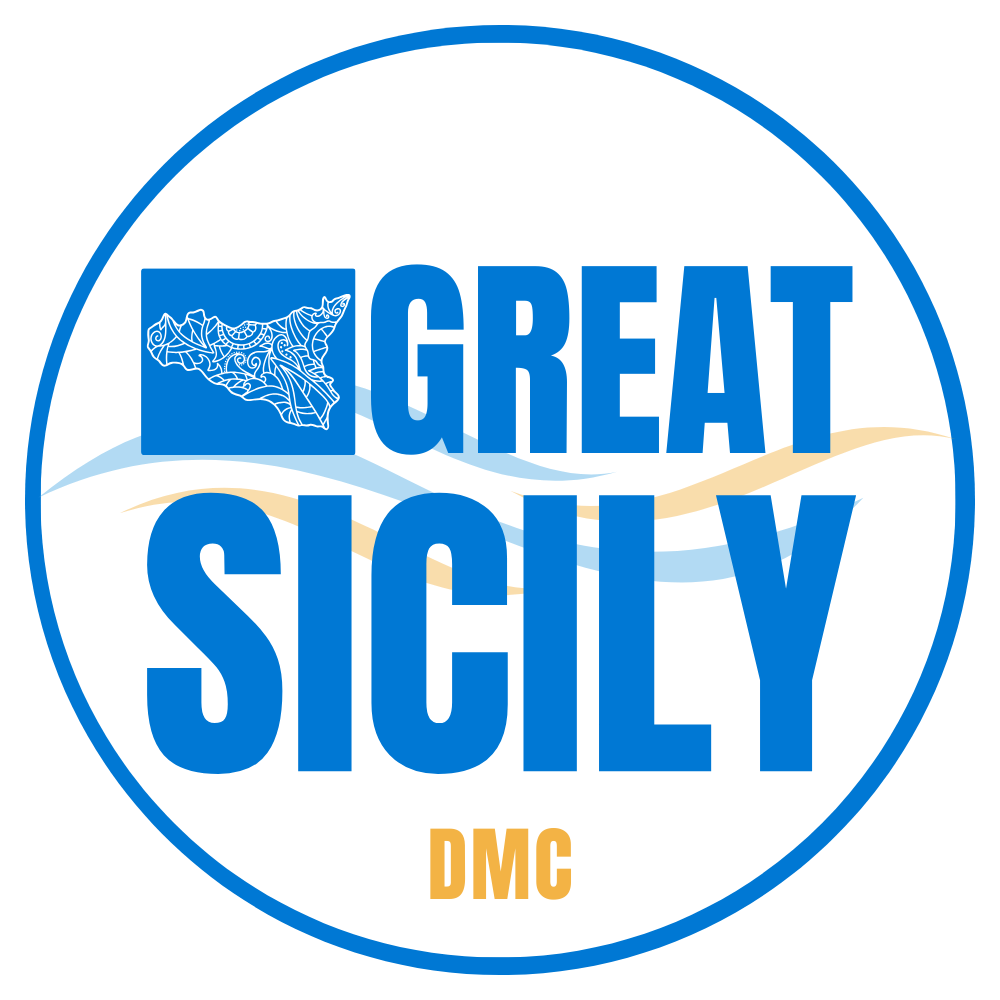Catania, a city of history, culture, and Mediterranean flavors
- The Sicilian Wanderer

- Aug 29, 2023
- 7 min read

Catania, a city located on the eastern coast of Sicily, is one of the oldest and most captivating cities in southern Italy. Known as the "gateway" to Sicily, Catania was founded by the ancient Greeks and has a rich and fascinating history that dates back over 2,700 years. Today, Catania is a vibrant and cosmopolitan city, renowned for its baroque architecture, delicious cuisine, and festive atmosphere.
History and Culture
Catania, located on the eastern coast of Sicily, boasts a rich and intricate history that dates back millennia. Established as a Greek colony in 729 B.C. by the Chalcidians, one of the early Greek tribes to settle in Sicily, Catania has witnessed a series of dominations that have shaped its cultural and architectural identity. During ancient times, Catania became a significant commercial and cultural hub under the Greeks. However, with the rise of the Roman Empire, the city was overtaken and became one of the primary Roman cities in Sicily. This Roman era left numerous monuments and structures, including amphitheaters, baths, and basilicas. After the fall of the Roman Empire, Catania went through periods of instability but continued to thrive under various dominations. The Vandals, Byzantines, and Arabs introduced new traditions and cultural influences. Under the Arabs, for instance, Catania became a center of learning and cultural exchange, and many elements of Arab culture are still visible in the city's cuisine and architecture. With the arrival of the Normans in the 11th century, Catania witnessed a cultural and architectural renaissance. Palaces, churches, and fortifications were built, many of which still stand today. The Spaniards and Bourbons, who ruled the city in subsequent periods, further enriched Catania's cultural fabric, introducing new traditions and architectural styles. Catania's historic center, with its cobblestone streets and majestic buildings, is an open-air museum. Declared a World Heritage Site by UNESCO in 2002, the heart of the city is a tribute to 18th-century Baroque architecture. One of Catania's most distinctive features is the use of black lava stone in construction. This stone, a reminder of the eruptions of Mount Etna, the nearby active volcano, gives the city a unique and captivating appearance. Beyond architecture, Catania is also a hub for art, music, and literature. The city has birthed numerous artists, writers, and musicians who have contributed to Italy's rich cultural tapestry. Today, Catania continues to be a vibrant and dynamic city, where the past and present merge in perfect harmony, offering visitors an unforgettable experience.
What to Visit
Catania, a gem on the eastern coast of Sicily, offers a plethora of attractions that capture the essence of its rich history and vibrant culture. Here's an expanded guide to the city's must-visit sites, complete with opening hours and ticket prices:
What to Visit
Cathedral of Sant'Agata - Nestled in the heart of Piazza del Duomo, this iconic cathedral stands as a testament to Catania's deep-rooted faith and devotion to its patron saint, Sant'Agata. Visitors can marvel at its intricate architecture and artistry from 7:00 am to 12:30 pm and 4:00 pm to 7:00 pm daily. Entrance is free.
Castello Ursino - A 13th-century fortress, this castle now houses the Civic Museum of Catania, showcasing a vast collection of art and archaeological treasures. Open daily from 9:00 am to 1:30 pm and 2:30 pm to 5:30 pm (closed on Mondays). Admission is 6 euros for adults and 3 euros for children.
Roman Theatre - A testament to Catania's Roman legacy, this theatre is among the most well-preserved in southern Italy. It offers a panoramic view of the city and is open daily from 9:00 am to 5:00 pm (summer hours extend to 7:00 pm). Tickets are priced at 8 euros for adults and 4 euros for children.
Roman Amphitheatre - Constructed from volcanic stone in the 2nd century AD, this grand structure hosts open-air concerts and events during summer. Open daily from 9:00 am to 5:00 pm (summer hours extend to 7:00 pm). Admission is 8 euros for adults and 4 euros for children.
Benedictine Monastery - A sprawling Baroque complex, it houses a library, a church, and a cloister. Open from Tuesday to Sunday, 9:00 am to 6:00 pm. Tickets are 6 euros for adults and 3 euros for children.
Fountain of Malavoglia - Located near the port, this fountain pays homage to Giovanni Verga's renowned novel "I Malavoglia." The statue depicts a woman seated on a rock, holding a basket of fish. Entrance is free.
Bellini Museum - A modern art museum dedicated to the works of the Sicilian painter Vincenzo Bellini. Open from Tuesday to Sunday, 9:00 am to 6:00 pm. Admission is 8 euros for adults and 4 euros for children.
Teatro Massimo Bellini - An opera house built in 1890, it hosts a range of opera and ballet performances. Opening hours vary based on show schedules, and ticket prices depend on the performance.
Norman Castle - Erected by the Normans in the 12th century, it stands in Catania's old town. Today, it's a venue for art exhibitions and concerts. Open daily from 9:00 am to 1:30 pm and 2:30 pm to 5:30 pm (closed on Mondays). Admission is 6 euros for adults and 3 euros for children.
Greek-Roman Archaeological Park - Located a short distance from Catania, this park was built atop the ruins of an ancient Greco-Roman city. Here, visitors can explore remnants of temples, amphitheaters, and public baths. Open from Monday to Saturday, 9:00 am to 6:00 pm, and Sunday from 9:00 am to 1:00 pm. Tickets are 10 euros for adults and 5 euros for children.
Fish Market - Near Catania's port, this bustling open-air market offers a plethora of fresh seafood. It's an ideal spot to savor Catania's culinary delights, from grilled fish to pasta alla Norma and granita. Entrance is free.
Playa Beach - A pristine black sand beach close to Catania's center, it's perfect for leisurely strolls, sunbathing, and enjoying the Mediterranean waters. Access to the beach is free.
Catania offers a wide range of tourist attractions, ranging from history and culture to nature and cuisine. Ticket prices may vary based on the season and the age of the visitor, so it's always advisable to check details on the official websites of the attractions.

Beyond the typical sightseeing, Catania pulsates with a myriad of vibrant activities waiting to be explored. Here are some tantalizing suggestions:
1. Savor the Gastronomic Delights: Catania's culinary scene is a feast for the senses. Dive into the city's rich gastronomy that marries fresh ingredients with the intoxicating flavors of the Mediterranean. Relish iconic dishes like 'pasta alla Norma', indulge in freshly grilled seafood, or cool off with a refreshing granita, an icy treat drizzled with fruit syrup.
2. Venture into the Etna's Majestic Realm: Nestled at the foothills of Europe's highest active volcano, Mount Etna, Catania offers a gateway to nature's dramatic theater. Embark on treks across Etna's National Park, where every trail unveils panoramic vistas of rolling hills, dense woodlands, and the shimmering coastline.
3. Immerse in the Market Hustle: The city's bustling markets, like the vibrant Mercato del Pesce and the historic Mercato di Piazza Carlo Alberto, are a sensory overload. Navigate through stalls bursting with fresh produce, aromatic cheeses, cured meats, exotic spices, handcrafted ceramics, and unique souvenirs.
4. Celebrate with the Catanians: Catania's spirit is infectious, especially during its numerous festivals and celebrations that span the calendar. The pinnacle of these is the revered Feast of Sant'Agata. Held every February, this three-day extravaganza pays homage to the city's patron saint and is an experience of a lifetime.
Dive into Catania's tapestry of experiences, and let the city's rhythm captivate your soul.

Several captivating tourist attractions lie in close proximity to Catania, beckoning travelers to explore their unique charm. Here are some enriched suggestions:
1. Taormina: Just 50 kilometers from Catania, Taormina stands as a picturesque medieval town, perched high with breathtaking vistas of the azure sea and the majestic Mount Etna. Wander through its cobbled streets to discover the ancient Greco-Roman Theatre, a testament to the town's rich history. The lush Giardino Pubblico offers a serene escape, while the Chiesa di San Giuseppe, with its intricate architecture, stands as a testament to the town's religious heritage.
2. Gole dell'Alcantara: A mere 40 kilometers from Catania, the Alcantara Gorges present nature's artwork - canyons sculpted by a river meandering through volcanic rock. Embrace the adventurer in you by trekking, cycling, or kayaking through this natural wonder. The sheer cliffs and the play of sunlight on the water promise a mesmerizing spectacle.
3. Siracusa: About 70 kilometers from Catania, the ancient city of Siracusa is a treasure trove of historical landmarks. Delve into its storied past at the Greek Theatre, which once echoed with the tragedies of Aeschylus. The Roman Amphitheater, the Temple of Apollo, and the mythical Fonte Aretusa further weave tales of bygone eras.
4. Acireale: A short 20-kilometer journey from Catania brings you to Acireale, a city steeped in history and culture. Marvel at the grandeur of the Basilica dei Santi Pietro e Paolo, explore the diverse exhibits of the Civic Museum, and seek solace in the ornate Chiesa di San Sebastiano.
Each of these destinations, with their unique allure, promises a journey through time, nature, and culture, making them perfect getaways from the hustle and bustle of Catania.

The Quintessential Culinary Delight:
One of Catania's most cherished traditional dishes is undoubtedly the Pasta alla Norma. This dish is a delightful fusion of pasta, fried eggplants, tomatoes, basil, and salted ricotta cheese.
Here's the recipe for Pasta alla Norma:
Ingredients:
- 400g of pasta (spaghetti or rigatoni are preferred)
- 2 eggplants
- 400g of peeled tomatoes
- 1 clove of garlic
- Extra virgin olive oil
- Salt and pepper to taste
- Grated salted ricotta cheese
- Fresh basil leaves
Procedure:
1. Dice the eggplants and fry them in hot oil until they turn golden brown. Once done, drain and set them aside.
2. In a separate pan, sauté the garlic clove in extra virgin olive oil. Add the peeled tomatoes and let it simmer for about 10 minutes.
3. Introduce the fried eggplants to the tomato sauce and continue cooking for an additional 5 minutes.
4. Meanwhile, boil the pasta in salted water until it's al dente. Drain it well.
5. Mix the pasta with the tomato and eggplant sauce, tossing everything together for a couple of minutes.
6. Season with pepper and sprinkle freshly chopped basil.
7. Serve the Pasta alla Norma with a generous dusting of grated salted ricotta cheese on top.
Pasta alla Norma is a straightforward dish, yet its flavors are profoundly rich, embodying the essence of Sicilian cuisine. Whether you're a local or a visitor, this dish is sure to leave a lasting impression on your palate.



































Comments